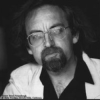Brian Ferneyhough

Brian Ferneyhough
Brian John Peter Ferneyhoughis an English composer, who has resided in California, United States since 1987. His work characterized by highly complex notation and the extensive use of irregular nested rhythmic tuplets, Ferneyhough is typically considered to be the central figure of the New Complexity movement. Ferneyhough taught composition at the Hochschule für Musik Freiburg and the University of California at San Diego, and currently, Stanford University, and is a regular lecturer in the summer courses at Darmstädter Ferienkurse...
NationalityBritish
ProfessionComposer
Date of Birth16 January 1943
Questioning the nature and implications of liminal instances necessarily involves failure, if only in the specifically technical sense of entering spaces where prevailing criteria of success scarcely apply.
The past nine years in San Diego have represented such a period of questioning.
Composers dialogue - and obsessively, bitterly argue - with other composers, often over the span of several centuries.
Certainly being in California has encouraged a sustained commitment to rethinking the nature, purposes, and relevance of the contemporary arts, specifically music, for a society which by and large seems to manage quite well without them.
I don't like listening to my music, not even new pieces. Generally, they sound pretty much like I expected them to sound, so it's what I wanted, and that's it.
I frequently compose out the entire metric structure of a piece in modified cyclic form, where each cyclic revolution undergoes some form of 'variation' much as if measure lengths were concrete musical 'material.'
When I left Europe in 1987 I did so with the thought that my relevance as a composition teacher would benefit from a certain cool distance to certain tendencies I had been observing for several years with increasing disquiet.
Actually, most things I say in public lead more or less directly to my own compositional practice, so I should be careful about generalizing lest they come back to haunt me.
I dont see lines of force as being destructive, except to the extent that they are exclusively traceable through observance of the path of distorted material left in their wake.
If nothing is at risk, nothing is established.
What makes a specific quality or quantity of innovation retain its intense newness over the years?
If the work of art is to continue pursuing the vision of both being in and of the world but nevertheless in some fashion being more than just one more object to the mounting clutter, this is the specific point, I think, where this must be assured.
Hence my obstinate emphasis on stylistic continuity from work to work rather than specific sibling relationships between the individual work and other members of its stylistic 'family' in the world outside.
I suppose that the scope and implications of such forces have rendered my personal accounting ritual pretty much obsolete. That's how things sometimes go.